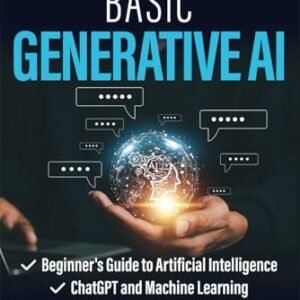In an era defined by rapid technological advancement, the landscape of educational administration is undergoing a significant transformation. Gone are the days when paperwork piled high on desks was the hallmark of school management; today, artificial intelligence (AI) is stepping into the spotlight, revolutionizing the way educational institutions operate. From improving communication to optimizing resource allocation, AI offers a suite of tools that promise to enhance efficiency and streamline processes in educational administration. In this article, we explore how AI is reshaping administrative tasks, enabling educators and administrators to focus on what truly matters: delivering quality education and fostering student success. Join us as we delve into the transformative potential of AI and the future it holds for educational leaders.
Table of Contents
- Leveraging AI for Enhanced Decision-Making in Educational Leadership
- Automating Administrative Tasks: Freeing Up Time for Strategic Initiatives
- Data-Driven Insights: Utilizing AI for Improved Student Outcomes
- Implementing AI Solutions: Best Practices for Educational Institutions
- In Summary
Leveraging AI for Enhanced Decision-Making in Educational Leadership
In the realm of educational leadership, integrating artificial intelligence offers unparalleled opportunities for effective decision-making processes. By utilizing data-driven insights, administrators can anticipate trends, identify areas for improvement, and allocate resources more effectively. AI tools enable leaders to analyze diverse data sets, from student performance metrics to community feedback, creating a comprehensive view of the educational landscape. This allows leaders to make informed choices that can significantly enhance student outcomes and overall institutional health.
Furthermore, AI solutions empower educational administrators to streamline operations, reducing the burden of routine tasks and freeing up valuable time for strategic planning. With features like predictive analytics and automated reporting, leaders can focus on long-term goals and innovative initiatives rather than getting bogged down by day-to-day operations. Here are some ways AI supports enhanced decision-making in education:
- Personalized Learning: Tailoring educational experiences to individual student needs.
- Resource Optimization: Efficient allocation of teaching staff and materials.
- Data Visualization: Transforming complex data into actionable insights.
- Trend Prediction: Forecasting enrollment patterns and budget adjustments.
Automating Administrative Tasks: Freeing Up Time for Strategic Initiatives
In the age of digital transformation, educational institutions are increasingly recognizing the immense potential of automation to enhance operational efficiency. By implementing AI-driven solutions to manage routine administrative tasks, schools and universities can significantly reduce the burden on their staff. This allows educators to redirect their focus toward more impactful initiatives, such as enhancing student engagement and fostering innovative teaching methods. Some key areas where automation can prove invaluable include:
- Enrollment Management: Streamlining the admission process through automated applications and tracking systems.
- Scheduling: Efficiently managing class schedules and room assignments using intelligent algorithms.
- Communication: Automating routine communications with students and parents to ensure timely updates and reminders.
By leveraging technology, educational institutions can not only optimize their administrative functions but also gather valuable data insights for strategic decision-making. Consider the following table that illustrates the impact of automation on various administrative tasks:
| Task | Traditional Method | Automated Method | Time Saved |
|---|---|---|---|
| Attendance Tracking | Manual Roll Call | Digital Attendance Software | 60% Time Reduction |
| Report Generation | Spreadsheet Compilation | Automated Report Generation | 70% Time Reduction |
| Event Registration | Paper Forms | Online Registration Forms | 50% Time Reduction |
As these examples demonstrate, transitioning to automated processes not only streamlines administrative responsibilities but also empowers educators to dedicate their time towards initiatives that enhance the overall educational experience. Institutions that embrace such transformations are likely to foster an environment ripe for innovation and growth, ultimately benefiting the communities they serve.
Data-Driven Insights: Utilizing AI for Improved Student Outcomes
Leveraging artificial intelligence in educational settings offers unprecedented opportunities for administrators to gain insights into student performance and engagement. By analyzing data from various sources, such as attendance records, assessment scores, and behavioral metrics, educators can identify patterns and trends that may not be immediately visible. This allows for a more informed approach to decision-making, enabling schools to implement strategic interventions tailored to individual needs. Key benefits of utilizing AI in this capacity include:
- Predictive Analytics: Anticipating student challenges before they arise.
- Personalized Learning Paths: Customizing educational experiences to suit diverse learning styles.
- Enhanced Resource Allocation: Optimizing staff and material deployment based on data-driven needs.
Moreover, the integration of AI tools fosters a collaborative environment by involving students, parents, and teachers in the educational journey. For instance, AI-driven platforms can provide real-time feedback, enhancing communication channels between all stakeholders. This promotes transparency and accountability, subsequently boosting overall student outcomes. Consider the following table summarizing some effective AI tools being adopted in education:
| AI Tool | Functionality | Impact on Students |
|---|---|---|
| Adaptive Learning Systems | Personalizes content delivery | Improves engagement and comprehension |
| Automated Grading Software | Streamlines assessment processes | Saves time for educators, allowing more focus on teaching |
| Behavioral Analytics Tools | Monitors student engagement | Identifies at-risk students early |
Implementing AI Solutions: Best Practices for Educational Institutions
To effectively implement AI solutions in educational administration, institutions must prioritize strategic planning. This involves identifying specific goals that AI can help achieve, such as improving student engagement, enhancing data analysis for academic performance, or automating administrative tasks. Collaboration among stakeholders is critical, which means involving educators, administrators, IT experts, and even students in the discussion. Regular workshops and feedback sessions can foster a culture of innovation and ensure that AI tools align with the institution’s needs.
Another best practice is to invest in training and support for staff and faculty. AI technologies can be complex, and providing adequate training will help educators integrate these tools into their curricula effectively. Institutions should also consider establishing a data governance framework to safeguard privacy and ensure compliance with educational regulations. Below is a table that outlines key areas to focus on when incorporating AI in education:
| Focus Area | Key Considerations |
|---|---|
| Goal Setting | Define measurable outcomes for AI applications. |
| Stakeholder Engagement | Involve diverse groups for broader perspectives. |
| Training | Provide continuous learning opportunities for all users. |
| Data Governance | Ensure compliance and protect student information. |
In Summary
As we’ve explored throughout this article, the integration of artificial intelligence into educational administration stands to revolutionize the way institutions operate. By automating routine tasks, enhancing data analysis, and supporting decision-making processes, AI is not just a tool; it’s a catalyst for systemic change.
The potential benefits are immense—from freeing up valuable time for educators and administrators to focusing on what truly matters: fostering student success and enhancing learning environments. However, the successful implementation of AI also requires a thoughtful approach, ensuring that all stakeholders are engaged and that ethical considerations are thoughtfully navigated.
As we move forward, it is essential for educational leaders to embrace this technological evolution and invest in training and infrastructure that support AI initiatives. The journey towards streamlined processes is not just about adopting new technologies; it’s about evolving a culture that prioritizes collaboration, innovation, and continuous improvement.
the future of educational administration is bright with possibilities. By harnessing the power of AI, we can create more efficient, equitable, and responsive educational systems that ultimately benefit students and communities alike. Let’s stay committed to this transformative journey and keep the conversation going—after all, the best is yet to come!





